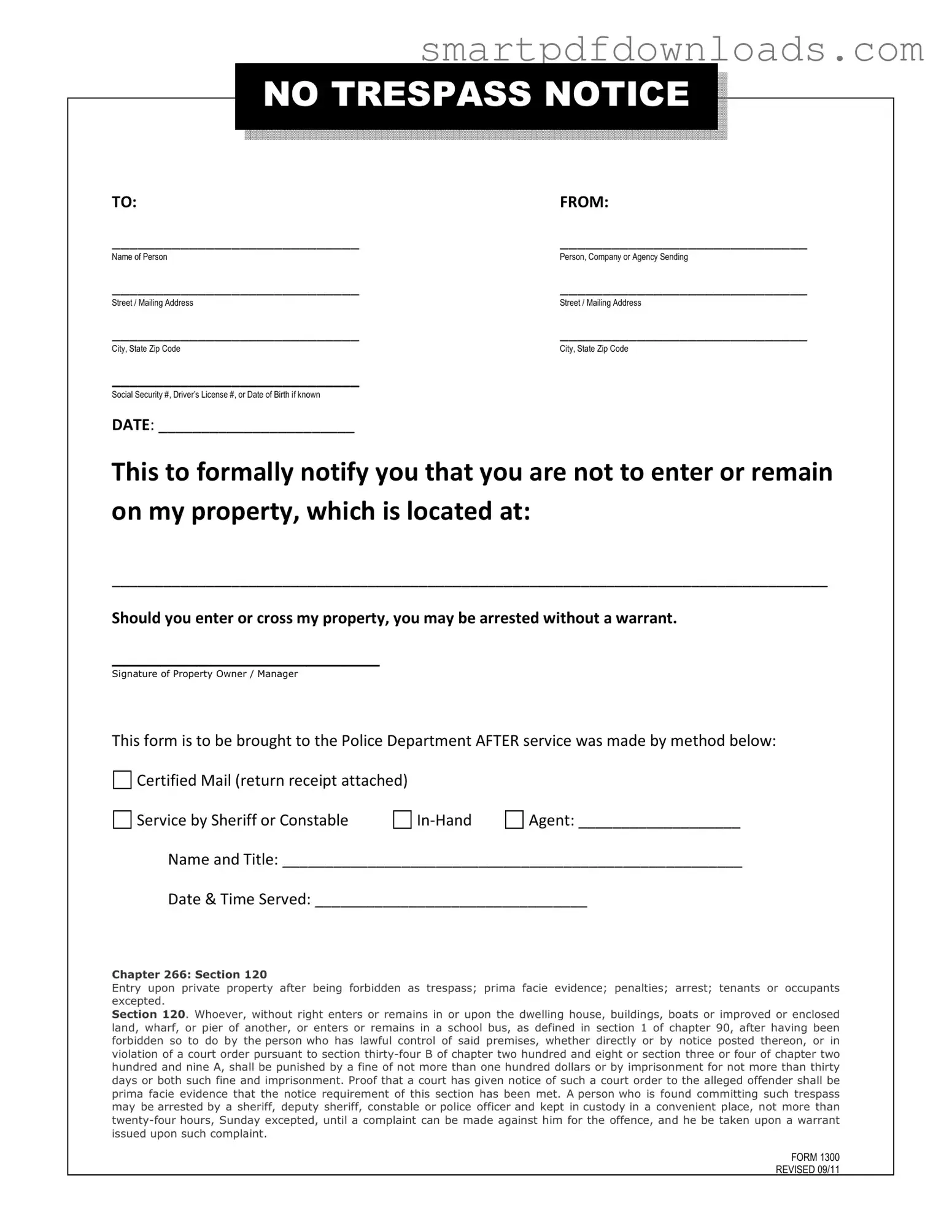No Trespassing Letter Form
A No Trespassing Letter serves as a formal notification to individuals that they are not permitted to enter or remain on a specified property. This document is essential for property owners seeking to protect their space and establish clear boundaries. By issuing such a letter, the property owner asserts their rights and informs potential trespassers of the legal consequences of disregarding these boundaries.
Edit No Trespassing Letter Online

